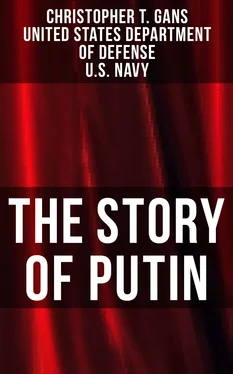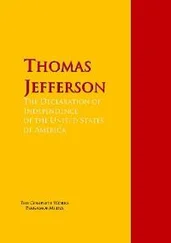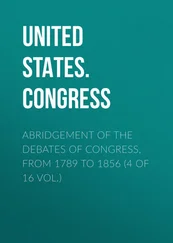6Nikolai Petrov, Masha Lipman, and Henry Hale, “Overmanaged Democracy in Russia: Governance Implications of Hybrid Regimes,” Carnegie Papers, no. 106 (Washington DC: Carnegie Endowment for International Peace, February 2010), 26.
3. Implications of Russians’ Anti-Americanism
Table of Contents
As alluded to in polling data, the intensity of the Russian populace’s anti-Americanism may appear consistent, but is really anything but. Its roots “do not go very deep” according to Vladimir Shlapentokh, who claims that the Putinist state and its media control are to blame for any rampant anti-Americanism in Russia. Changes in regime and media tone would likely lessen widespread anti-Americanism in the countryside. By controlling the media, the Soviets, like Putin, could control the level of anti-American news or propaganda that reached the isolated Soviet population and thereby directly control their level of anti-Americanism. Prior to 1947 that anti-Americanism was tepid at worst. Soviet leaders intensified or curtailed the anti-American propaganda in their media throughout the Cold War. Under Stalin it was rampant; under Brezhnev it was restricted while pursuing a mutual détente; by the time of Gorbachev’s Perestroika, it was practically non-existent. So the current Russian public’s anti-Americanism may be widespread, but may also remain only skin deep. 1
Or are the elements or Russian society beyond the Kremlin inner-circle legitimately receptive to anti-Americanism? Mendelson and Gerber hold that the “Putin Generation” of young Russian adults is extremely receptive to the regime’s anti-Americanism and most youths hold similarly deep anti-American convictions. 2Even if so, such a group only represents a fraction of the populace as a whole. The Putinist regime’s survival depends on a much wider base of support. A combination of die-hard anti-Americans and Shlapentokh’s shallow-rooted and passive anti-Americans, created by the Putinist mechanisms, result in an amalgamation of the entire population that allows the Putinist regime to claim itself as reflective of the consensus of its governed. Russian society is anti-American and, therefore, so too is the Putinist government.
1Vladimir Shlapentokh, “The Puzzle of Russian Anti-Americanism: From ‘Below’ or From ‘Above,’” Europe-Asia Studies 63, no. 5 (2011), 875 — 876.
2Sarah Mendelson and Theodore Gerber. “Us and Them: Anti-American Views of the Putin Generation,” The Washington Quarterly 31, no. 2 (2008), 137.
E. METHODOLOGY AND SOURCES
Table of Contents
The historical and analytical methods will be employed in this thesis covering an extended case study of anti-Americanism in Russia during the years under Vladimir Putin’s leadership from 1999 until present day 2013. The analysis will focus on anti-Americanism as a domestic political tool within an authoritarian state rather than focusing on its use as a geostrategic mechanism within international relations. Specific foreign policy actions and postures taken by Putin and Russia as well as words from his and his surrogates’ own mouths from the historical record will be referenced for contextual analysis with the goal of discerning patterns of anti-Americanism on both the world stage and the Russian stage during the prescribed timeline.
The most important sources for this thesis will be transcripts of statements by Russian officials, including Vladimir Putin, as well as contemporary scholarly analyses of Russian politics and foreign policy. Of the sources surveyed, many are primary sources, to include Putin’s autobiographical interview book First Person . Primary source transcripts from the Russian government’s public online archives will be equally valuable, to include Federal Assembly addresses and Putin’s yearly multi-hour long news conferences and public-oriented discussions known as Direct Line in which public and press posit questions on a plethora of topics including foreign affairs and politics. These primary sources, along with the a wide array of all-encompassing academic and scholarly analytical resources available on the subject areas pursuant to this thesis will provide a solid foundation from which to delve into the necessary aspects of anti-Americanism.
As noted already, Russian public polling data spanning the entire era of Putin’s leadership is widely available from different organizations, including the independent Levada Center, as well as the state controlled Russian Public Opinion Research Center. Data from such organizations will facilitate a general analysis of the levels of anti-Americanism beyond the Kremlin walls and Russian government officials’ mouths.
In addition, historical and contemporary works about authoritarian governments and the structures and functionality of such systems will provide valuable insight into the near-authoritarian/hybrid system now entrenched in Putin’s Russia so that an evaluation may be made about the utility of anti-Americanism to domestic politics.
Table of Contents
Chapter II will outline the recent historical examples of anti-Americanism in Putin’s Russia to include an analysis of Putin’s evolving anti-Americanism over time from a historical context during the Soviet era as well as post-Soviet Russia. Significant discussion will be offered about the role the 1990s Yeltsin years may have played in the exacerbation of Putin’s hostility toward America. Starting with his sudden appearance at the power-table in 1999 through present day 2013, the Putin years shall be analyzed for consistencies or fluctuations in Putinist anti-Americanism. The chapter will conclude with an interpretation of the many different forms that Putin’s anti-Americanism has taken.
The thesis will then turn toward the nature of domestic Russian politics in Chapter III, namely an overview of Putin’s hybrid authoritarian regime and what makes his Russia something less than an outright authoritarian state. An analysis of the role of the public and the elites within the Russian political sphere will also be offered. A base of understanding of the democratic-authoritarian nature of Russia is required. By showing how Putin’s hold on power still remains in the hands of his constituents, the subsequent interpretation of the necessity of Putin’s anti-Americanism in his domestic sphere will be more plausible. This chapter will also include discussion of the authoritarian mechanisms available to Putin and detail the means by which Putin and his government are able to influence public sentiment and opinion toward the United States.
Chapter IV will then combine the nature of Russian anti-Americanism with the domestic circumstances of Russian politics to detail the potential domestic political implications of Putin’s anti-Americanism. Analysis will be offered regarding the benefits intrinsic to Putin’s exploitative use of anti-Americanism.
Chapter V will conclude the thesis with a summary of the findings and interpretations. Recommendations for further research shall also be presented. Additionally, insight will be offered regarding the most recent developments in Russian-American relations and how these instances could be interpreted based on the Putinist proclivity for domestically employed anti-Americanism.
II. VLADIMIR PUTIN’S ANTI-AMERICANISM: OUTWARDLY FLUCTUATING BUT INTERNALLY CONSISTENT?
Table of Contents
Chapter II will offer a thorough examination of the central character in this thesis: Vladimir Putin. An analysis shall be made regarding Putin’s personal history from a modest childhood upbringing to eventual twenty-first century global strongman. Special focus shall be offered regarding his adulthood experience within the Soviet Union and his tenure within the anti-Western paranoia-generating machine, namely the Committee for State Security, or KGB. The investigations shall then turn toward Putin’s post-Soviet-era experiences during the Yeltsin years culminating in Putin’s own ascendency to the pinnacle of power within the Russian Federation.
Читать дальше












